End-to-end encryption means that only you and your intended recipient can access the messages you send. This technology keeps your conversations private by scrambling the data, making it unreadable to anyone else, including service providers or hackers. When you send a message, it's encrypted on your device and only decrypted when it reaches the recipient's device. This layer of security is crucial for protecting sensitive information in today's digital world. If you want to understand more about how this technology fits into the larger picture of data security, there's plenty more to uncover.
Understanding Data Protection Basics
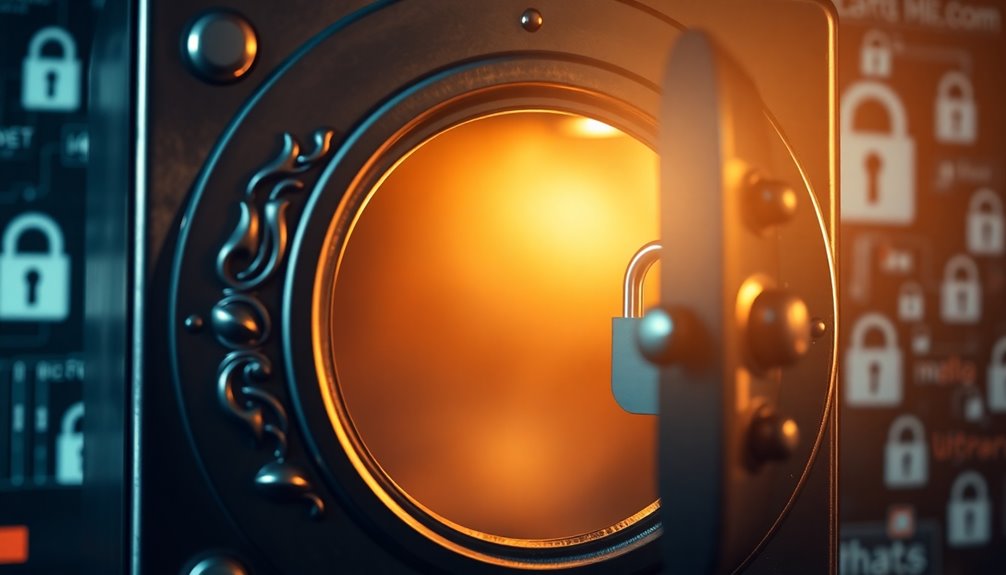
When you dive into data protection, it's essential to grasp the basics that underpin effective safeguarding. Start with data integrity, ensuring your information stays accurate and unchanged. Data confidentiality protects against unauthorized access, while data availability guarantees you can access information whenever needed. Managing data retention means knowing how long to keep data, and compliance with regulations like GDPR ensures you follow legal requirements. Understanding the importance of data protection is crucial in maintaining business integrity and continuity.
Key principles include lawfulness, fairness, and transparency, along with purpose limitation and data minimization. Regularly assess your data inventory and classify it based on sensitivity. Employ access controls and error correction technologies to safeguard your data.
Recent Encryption Law Changes
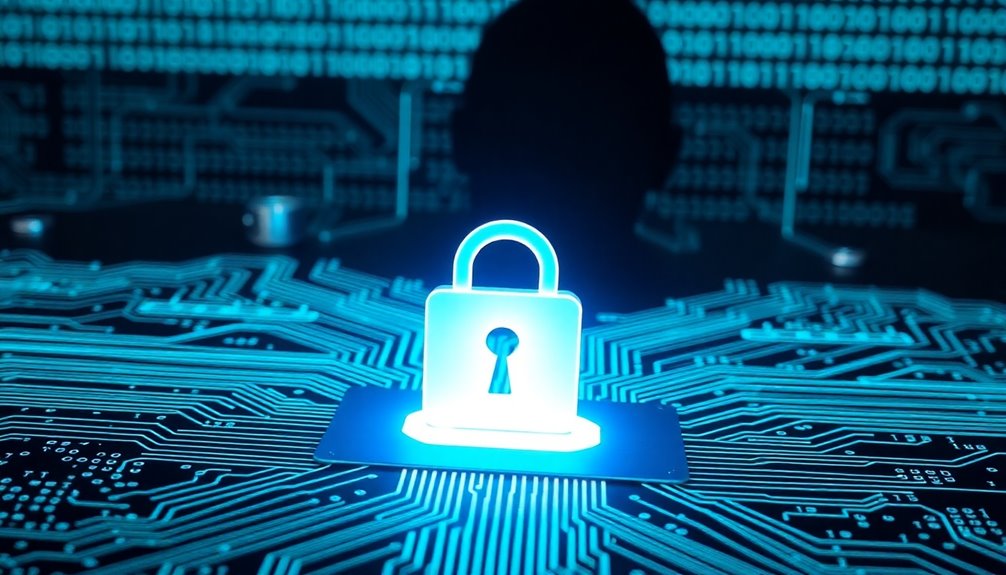
As recent cyber threats escalate, lawmakers are responding with significant updates to encryption regulations that impact data security practices across various sectors.
The HHS has proposed major updates to the HIPAA Security Rule aimed at enhancing cybersecurity for electronic protected health information. They're clarifying definitions and removing the distinction between "required" and "addressable" specifications. Additionally, the proposed changes include new notice requirements for workforce access termination status changes.
Meanwhile, the FBI and CISA recommend adopting end-to-end encryption to safeguard sensitive data, especially after recent cyberattacks. An executive order emphasizes encrypting DNS traffic and ensuring secure email connections.
However, tensions emerge as regulators discourage encrypted messaging while law enforcement advocates for it. Companies must navigate these evolving regulations to maintain compliance while ensuring robust security measures.
Consumer Demand Shifts

With the rise in data breaches and privacy concerns, consumers are increasingly prioritizing data security in their online interactions.
You're likely more aware of the risks associated with data privacy, especially after high-profile breaches. Regulations like GDPR and CCPA empower you to protect your data more effectively. In response to these challenges, AI-driven solutions are beginning to play a crucial role in enhancing data security measures.
A significant number of consumers, about 40%, rank data protection as crucial while shopping online. If you're a digital enthusiast, you probably demand robust security measures, influencing your choice of merchants.
Many users have migrated to encrypted messaging platforms like Signal and Telegram, showcasing a strong preference for private communication tools. This trend is reflected in the surge of users opting out of app tracking, as indicated by the iOS 14.5 update.
As you seek secure transactions, the adoption of payments and credentials vaults is on the rise, reflecting your heightened concern for data security.
Corporate Encryption Strategies
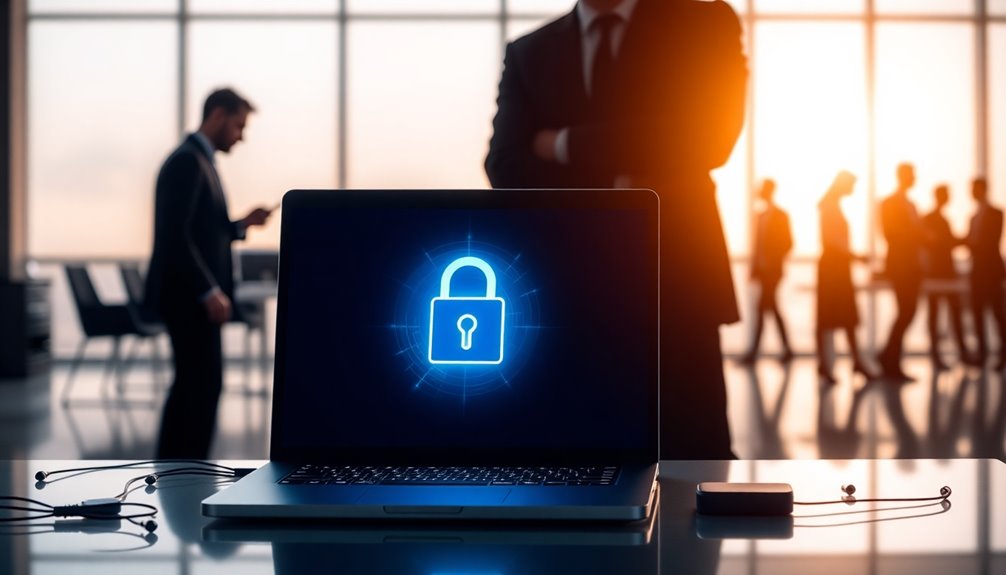
To safeguard sensitive data and maintain trust, organizations must adopt robust corporate encryption strategies.
Start by choosing the right encryption algorithm; prioritize proven options like AES, RSA, and ECC. Ensure compatibility with your existing systems while considering performance impacts. Strong encryption algorithms, such as AES and RSA, are essential for data security.
Next, manage encryption keys effectively by securely storing them, rotating them regularly, and enforcing strict access controls.
Implement data encryption by classifying data and selecting appropriate methods, whether full-disk or file-level. Regular audits will help maintain proper encryption practices.
Don't forget to ensure compliance with regulations and consider advanced solutions like quantum cryptography and blockchain integration.
Finally, train employees on encryption protocols and continuously monitor your strategies to keep them effective and up to date.
Government Surveillance and Encryption
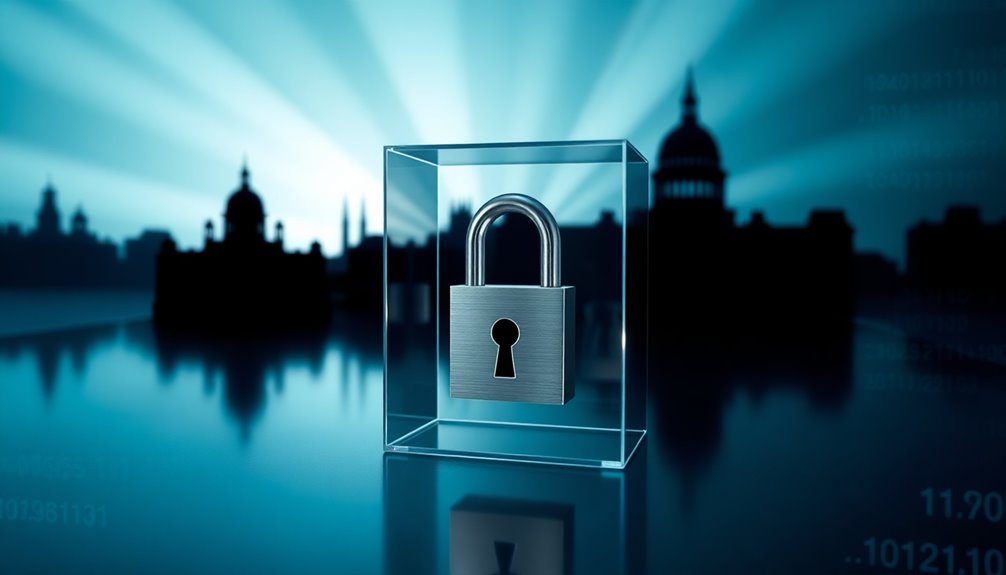
While governments assert the need for surveillance to ensure national security, the balance between safety and individual privacy becomes increasingly precarious.
Many countries, like France and Australia, have legal frameworks allowing agencies to access encrypted communications under specific circumstances. This raises concerns about privacy, as critics argue that these measures could lead to human rights violations. Additionally, the push for tech companies to create backdoors for law enforcement could expose data to hackers, especially in marginalized communities.
Encryption technologies, such as public key and symmetric key encryption, aim to safeguard communications, yet the ongoing tension between encryption and government access complicates your digital security landscape. End-to-end encryption is often cited as a crucial method for protecting user data from unauthorized access, which underscores the importance of maintaining robust security measures. Moreover, the effectiveness of encryption heavily relies on various algorithms and techniques, including the use of hash functions in cryptography, which ensure that data integrity remains intact during transmission. As cyber threats evolve, it becomes increasingly vital for organizations to adopt comprehensive security strategies that encompass not only encryption but also advanced techniques such as multi-factor authentication. Ultimately, balancing user privacy with the need for regulatory compliance remains a challenging dilemma in the quest for digital security.
You must stay informed to protect your privacy amidst these evolving challenges.
Emerging Encryption Technologies Impact
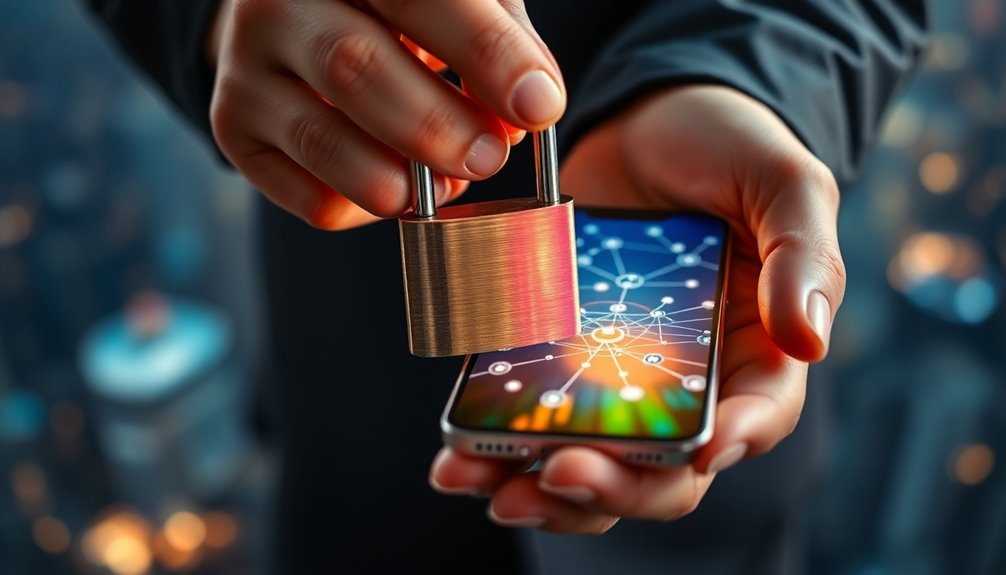
As emerging encryption technologies reshape the landscape of data security, you're faced with both exciting advancements and new challenges.
Quantum computing threatens traditional algorithms, demanding the development of quantum-resistant options like lattice-based cryptography. Meanwhile, blockchain enhances data security across various sectors, ensuring transparency and reducing fraud.
Homomorphic encryption lets you analyze encrypted data without compromising privacy, which is invaluable in healthcare and finance. Additionally, AI integration in encryption optimizes processes, predicts threats, and provides real-time detection, making your data safer and more accessible. Encryption standards ensure that the implementation of these advanced technologies remains consistent and trustworthy.
Embracing these technologies means staying ahead of potential vulnerabilities while leveraging their benefits for enhanced security in your digital interactions.
Frequently Asked Questions
How Does End-To-End Encryption Protect My Personal Messages?
End-to-end encryption protects your personal messages by ensuring only you and the recipient can read them.
When you send a message, it's encrypted on your device and stays encrypted during transit. Even if someone intercepts it, they can't decipher the content.
Only the recipient's device can decrypt the message. This method keeps your communication private, preventing third parties or even service providers from accessing your sensitive information.
Can End-To-End Encryption Be Bypassed by Hackers?
Imagine a fortress guarding your secrets, but even the strongest walls have cracks.
Yes, hackers can bypass end-to-end encryption under certain circumstances. They exploit vulnerabilities in implementation, like unauthenticated keys, or launch attacks on file metadata.
With clever techniques, they can decode keys or manipulate communications. While end-to-end encryption offers solid protection, it's vital to stay vigilant, as no system is entirely impenetrable.
Always safeguard your keys and be aware of potential threats.
What Happens if I Lose Access to My Encrypted Data?
If you lose access to your encrypted data, you face significant challenges. Without the private key, you can't decrypt your data, making it inaccessible.
It's crucial to regularly back up your keys to avoid this situation. If you can't recover the key, professional help might be necessary, but sometimes the data could be irretrievable.
To prevent loss, store keys securely and consider implementing two-factor authentication for added protection.
Are There Any Limitations to End-To-End Encryption?
Think of end-to-end encryption like a locked box sent through the mail. While the contents are secure, the post office still knows a package is being sent.
You might face limitations, like transaction records revealing who you're communicating with, and if your receiving device is compromised, the data's exposed.
Law enforcement can struggle to access necessary information, and the complexity can lead to security risks if not managed properly.
How Can I Verify if a Service Uses End-To-End Encryption?
To verify if a service uses end-to-end encryption, start by checking for key management.
Make sure the service uses public and private keys, with the private key never leaving your device.
Inspect network traffic for encrypted data that appears random and isn't modified.
Look for security codes between devices that match, and ensure encryption happens on the client side, with no server access to unencrypted data.
This confirms your communication's security.
Conclusion
In a world where your privacy matters more than ever, embracing end-to-end encryption means safeguarding your conversations, protecting your data, and preserving your freedom. It's about taking control, staying secure, and knowing that your information is yours alone. As you navigate today's digital landscape, remember that your choices shape your security. Stand firm, stay informed, and demand the protection you deserve. After all, in the fight for privacy, every encrypted message is a step toward a safer future.









